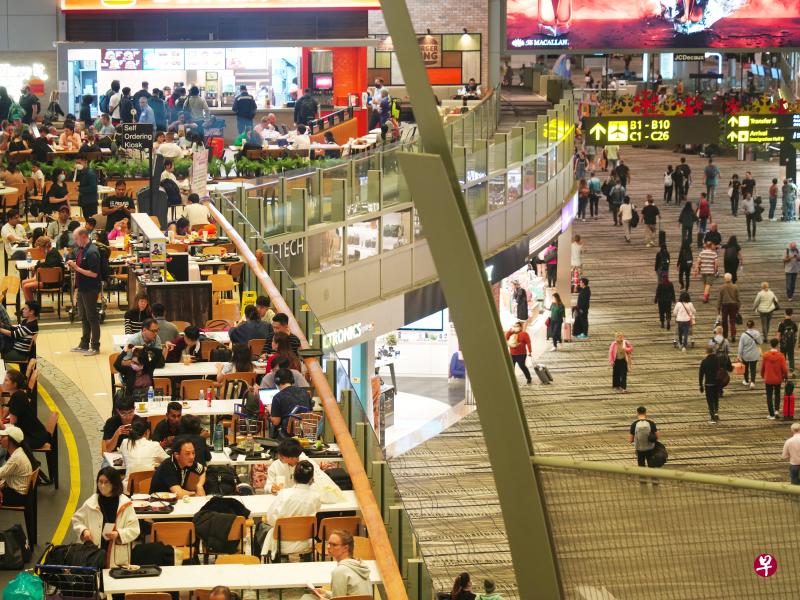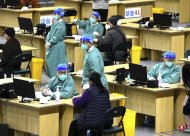
Analysts pointed out that after China strode towards the epidemic, it is expected to face a bumpy transition period in the short term.The boost may not immediately appear.
China ’s large -scale relaxation of border control measures can drive Chinese passengers to return to Singapore in 2023 to boost the local consumption field. It is estimated that the whole year can bring an additional 4.5 billion yuan retail sales for the whole year.
However, the interviewed analysts also pointed out that after China strode towards the epidemic, it is expected to face a bumpy transition period in the short term. There are many uncertain factors. China's re -opening border on the retail industry in Singapore may not be.It will appear immediately.
China announced on December 26 last year that from January 8 this year, no more nucleic acid testing and centralized isolation of the entryrs will be controlled, and the number of international passenger flights will not be controlled.
Liu Tiancheng, a senior economist of Daou Bank, pointed out in an interview with Lianhe Morning Post that before the outbreak of the crown disease, from 2017 to 2019, China is the largest source of passengers in Singapore.Related areas, including the retail industry brings a significant boosting role.
Before the outbreak, Singapore welcomed 3.63 million Chinese passengers in 2019, but visited in the past three years, and only 111,180 person -times in the first 11 months last year.
According to the data of the Singapore Tourism Bureau, it does not include the income of tourism, entertainment and game industry. The total tourism income of 2019 is 5.5 billion yuan.Among them, Chinese tourists accounted for 16.4 %, totaling 900 million yuan.Of these 900 million yuan, 54 % are spending on shopping, and the proportion is also the highest among immigrant passengers.
With data in 2019 as a reference, Liu Tiancheng predicts that Chinese passengers' full return may bring retail sales of 400 million to 500 million yuan to Singapore this year.
Tourist industry: full of expectations but uncertainty of recovery prospects
But he also said: "It is not easy to predict the impact on retail sales, because various factors may restrict the pace of Chinese passengers in the short term, such asEpidemic prevention measures, etc. On the other hand, there are also some room for rise in retail sales, such as backlog requirements and retaliatory tourism -related consumption. "
Ji Weizheng, an economist of Citi Group, is also optimistic that China's re -opening border can help promote the recovery of Singapore tourism and consumer industry.He pointed out that the overall number of visitors to the local monthly visit to 54 % before the epidemic, but the number of visitors from China is only 5 % before the epidemic, and there is still a lot of room for rise.
Moody's Analysis Company Economist Shi Jiayu pointed out that China's relaxation of strict zero -zero policy is roughly worthy of development, but it should not be too optimistic in the short term.
He said: "China will face a bumpy transition period, and the impact of relaxation policy is unlikely to appear immediately. These changes occur quickly, and consumers and investors need time to adapt."
The local tourists interviewed are full of expectations for Chinese tourists to return to Singapore, but they are also uncertain about recovery prospects.
Liu Yusong, partner and cooperative director of Tribe special travel agencies, pointed out that China ’s open border has many unclear factors for Singapore tourism in the short term, including when Singapore and China have recovered.It has changed, and the slowdown in China's economy has impacted the tourism consumption capacity of the locals.
He said: "Our Chinese partners are interested in re -ignition of our tourism products and ask for inquiries, but judging from the actual situation, the Chinese are now traveling mainly in the country, not overseas."
Nevertheless, the company is ready to welcome Chinese passengers, including the formulation of products that are suitable for Chinese passengers, contact and introduce new products with Chinese partners, and provide training for tour guides who speak Chinese.
Statistics Bureau data show that Singapore's retail sales in October last year were 4 billion yuan, which rose 11.3 % year -on -year in the first 10 months of last year.
Stepping into 2023, from a macro perspective, Singapore's retail industry has faced many challenges.Liu Tiancheng said: "Due to the further tightening of monetary policy, the global economic outlook in 2023 becomes weaker, which may affect tourism demand and tourism consumption, and have a negative impact on local retail sales. Weak economic outlook also impacts Singapore's domestic consumption demand in Singapore.At the same time, high inflation pressure is not possible to promote local families to reduce disposable expenditures. "
Liu Tiancheng predicts that local retail sales can increase by 2.3 % this year, an increase of 10 % of the expected 10 % increase in 2022.
Shijiayu also said that inflation is still the main downward risk faced by the local retail industry. In addition, the increase in consumption tax rates, retail sales are expected to slow down early this year.



